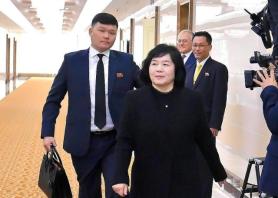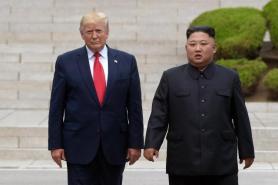
The two short-range ballistic missiles (SRBMs) detected by the Joint Chiefs of Staff (JCS) were fired near Sunan District in northwestern Pyongyang from around 3:30 a.m. to 3:46 a.m. on July 19. The SRBMs fell into the East Sea after flying some 550 kilometers (341 miles) each. Along with the U.S. intelligence authorities, South Korea is currently analyzing detailed information on the projectiles.
Prior to Pyongyang's missile launch, Seoul launched the Nuclear Consultative Group (NCG) with the U.S. on July 18. During South Korean President Yoon Suk-yeol's state visit to Washington in April, Yoon agreed with U.S. President Joe Biden to form the NCG to discuss how to plan for nuclear contingencies and cooperate on the two nations' approach to nuclear deterrence. The group will meet four times a year and the results of the meeting will be reported to the leaders of South Korea and the U.S.
The U.S. strategic nuclear submarine called "SSBN-737" also arrived in Busan on July 18. The 18,750-ton class submarine can carry 20 ballistic missiles with a maximum range of more than 7,360 kilometers (4,573 miles) each.
The two missiles were fired only seven days after the launch of Pyongyang's long-range ballistic missile called "Hwaseong-18" on July 12. The Korean Central News Agency (KCNA), a state-operated news in North Korea said that Hwaseong-18 reached an altitude of 6,648.4 kilometers and traveled 1,001.2 kilometers for 4,491 seconds before it "accurately landed" in the East Sea. The news agency said the missile launch proves the reliability of the North's strategic nuclear attack capabilities.
Copyright ⓒ Aju Press All rights reserved.




